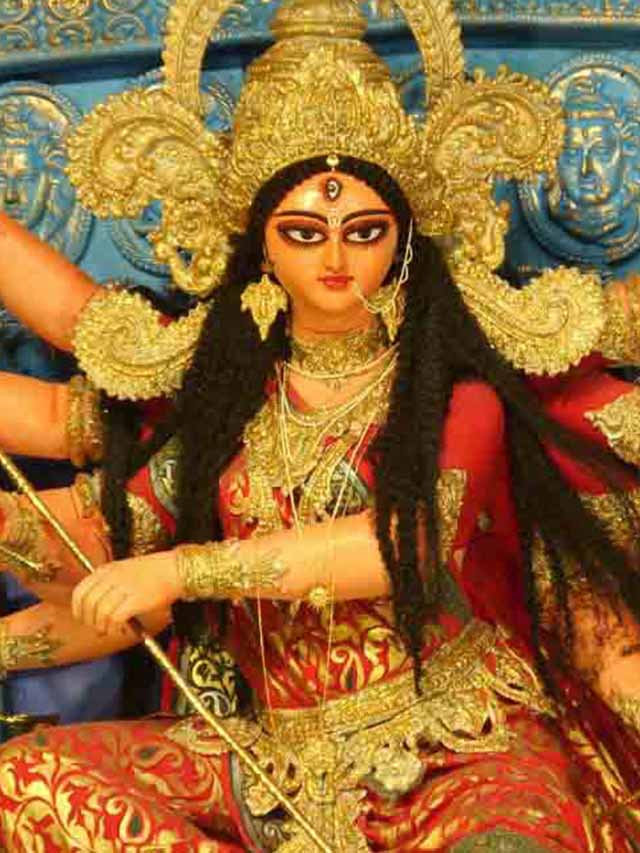
The Channel 46
Significance Of The 9 Colours & Days Of Navratri
Day 1:
On this day, devotees worship the first form of Goddess Durga, goddess Shailputri. Out of all the 9 colours of Navratri, the colour associated with this day is yellow, which represents brightness and cheer, thus, starting the festivity on the right note. The ritual of Ghatasthapana, which marks the beginning of the nine-day festivity, is performed on this day.

Day 2:
This day is dedicated to Goddess Brahmacharini, the unmarried avatar of Goddess Parvati. Out of all the Navratri colours, the shade chosen for this day is green, which is associated with nature, energy and growth.

Day 3:
Goddess Chandraghanta, who is the goddess of serenity and peace, is worshipped on this day as a part of the Navratri puja vidhi. Devotees pray to the Goddess to solve their problems and bring peace to their lives. They offer milk, sabudana kheer or makhana kheer for the bhog. Out of all the 9 colours of Navratri, he colour associated with this auspicious day is grey, which represents the ferocious mood of the Goddess.
Day 4:
This day is dedicated to the creative power of the universe, Goddess Kushmanda. Devotees observe a fast on this day believing that this can help them cure the diseases and pain they may be suffering from. Offerings like kuttu ke atte ka malpua are made to the Goddess. Out of all the Navratri colours, the shade chosen for this day is orange, representing energy and happiness.
Day 5:
The fifth day or Panchami is for honouring Goddess Skandamatan. The colour of the day is white, representing peace and purity. Navratri celebrations on this day consist of wearing new clothes and offering bhog in the form of fruits (especially bananas) to the Goddess. Dishes like kache kele ki barfi, lassi and kele ki sabzi are prepared.
Day 6:
On this day of Navratri katha, devotees worship Goddess Katyayani, the warrior Goddess. Wearing red on this day is considered auspicious. Red also represents vigour and action. Offerings of honey are made to please the Goddess.
Day 7:
Goddess Kaalratri, Goddess Durga’s most ferocious form is worshipped on this day. People dress up in royal blue (which represents the powerful energy of the goddess), worship the Goddess and offer jaggery as bhog.
Day 8:
Day 8 or Ashtami is one of the most auspicious days of Navratri. This day is for worshipping Goddess Mahagauri, who stands for peace and intelligence. People worship the goddess to mitigate their sins and start afresh. The bhog offered to the goddess on this day is prepared with coconut. The colour of the day is pink, which stands for fresh perspective and hope.
Day 9:
Navmi is for worshipping Goddess Siddhidatri and from all the Navratri colours, the shade chosen for this day is purple, representing power and ambition. On this day, devotees break their 9-day long fast. All the forms of Goddess Durga are worshipped. The bhog offered to the Goddess consists of halwa, puri and chana.
The Channel 46